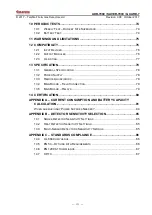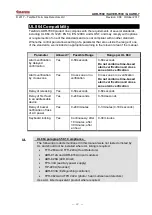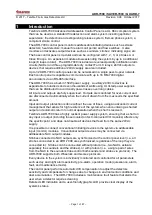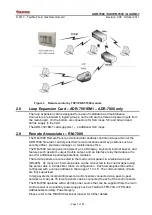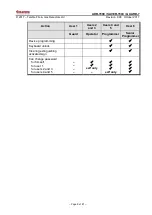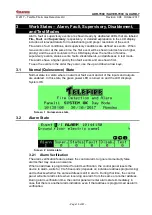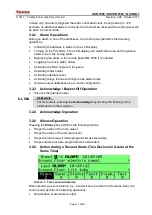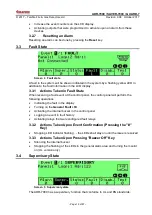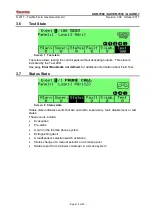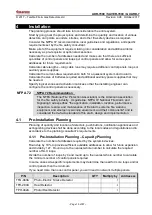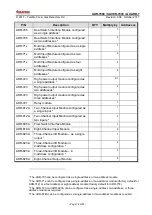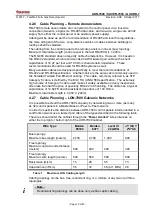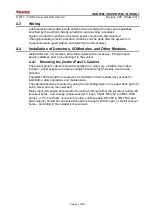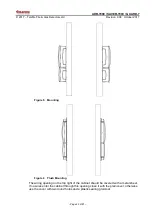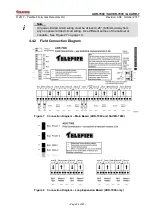
ADR-7000 / SAVER-7000 / GUARD-7
© 2017
– Telefire Fire & Gas Detectors Ltd
Revision 0.98 October 2017
– Page 10 of 87 –
3
Work States
– Alarm, Fault, Supervisory, Disablement,
and Test Modes
Alarm, fault or supervisory events are shown clearly by dedicated LEDs that are labeled
Fire,
Fault
, and
Supervisory
, respectively. A detailed explanation in the LCD display
includes all relevant details for troubleshooting and proper resolution of the event.
Fire alarms, fault conditions, and supervisory conditions are defined as events. When
two events occur at the same time, the first event will be shown (alarms have a higher
priority) and the event counters in the LCD display show the number of alarms,
supervisory events, status events, faults, disablements, and addresses in test mode.
Fire alarms have a higher priority than fault events and are shown first.
To see the events in the order they occur, use the up and down arrow keys.
3.1
Normal (Quiescence) State
Normal state is a state where no alarm or fault event and all of the inputs and outputs
are enabled. In this state, the green power LED is turned on and the LCD displays
System OK.
Screen 1 Quiescence state
3.2
Alarm State
Screen 2 Alarm state
3.2.1 Alarm Verification
The alarm verification feature allows the control alarm to ignore momentarily false
alarms that may cause a nuisance.
When an address is programmed for alarm verification, the control panel resets the
device in alarm, waits for 0 to 59 seconds (depends on individual address programming)
and rechecks whether the same address is still in alarm. During that time, the control
panel will enter alarm state when receiving an alarm from the same or another address.
During alarm verification time, the control panel will enter alarm state immediately in
case that there is another alarm indication even if that address is programmed as alarm
verification.




